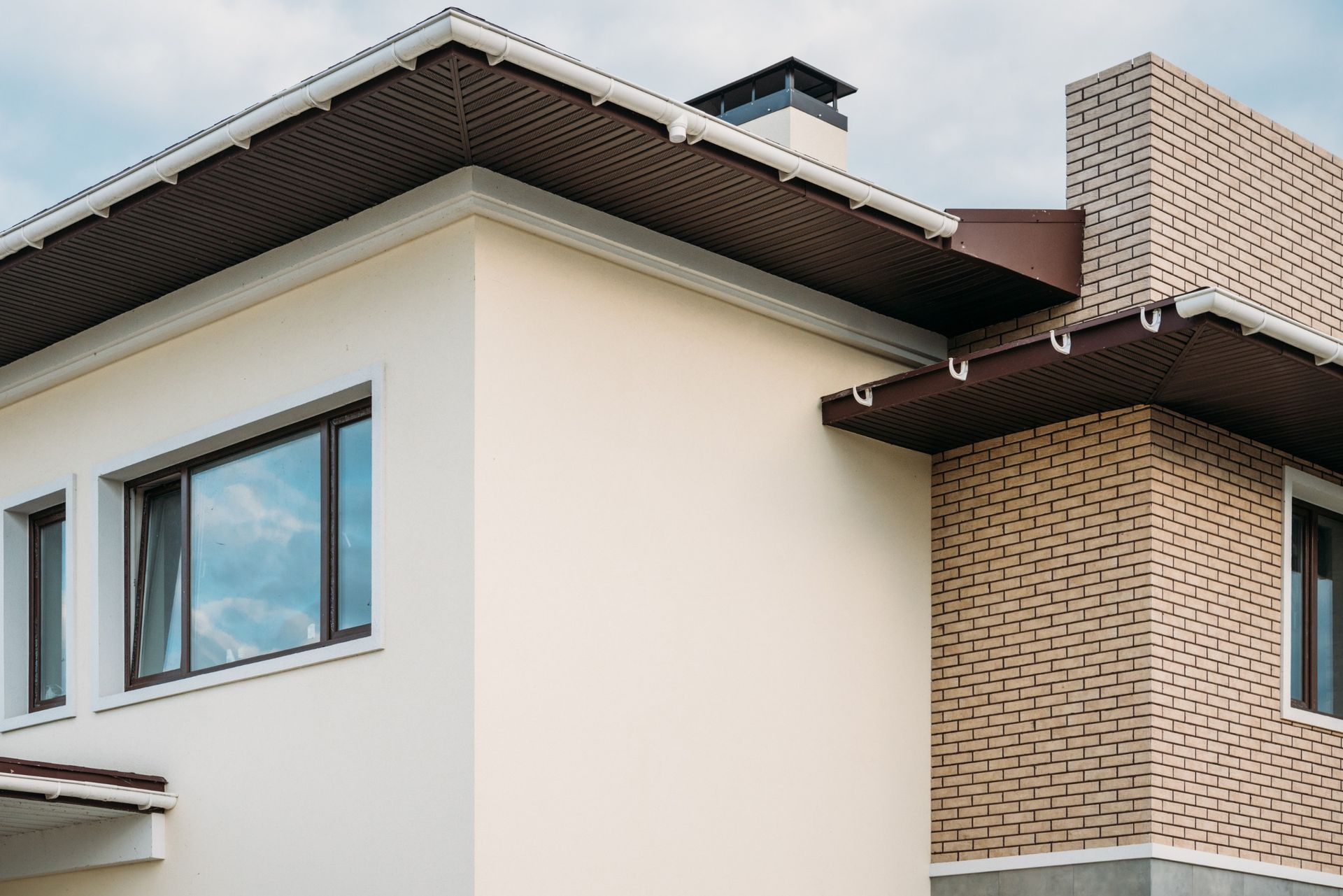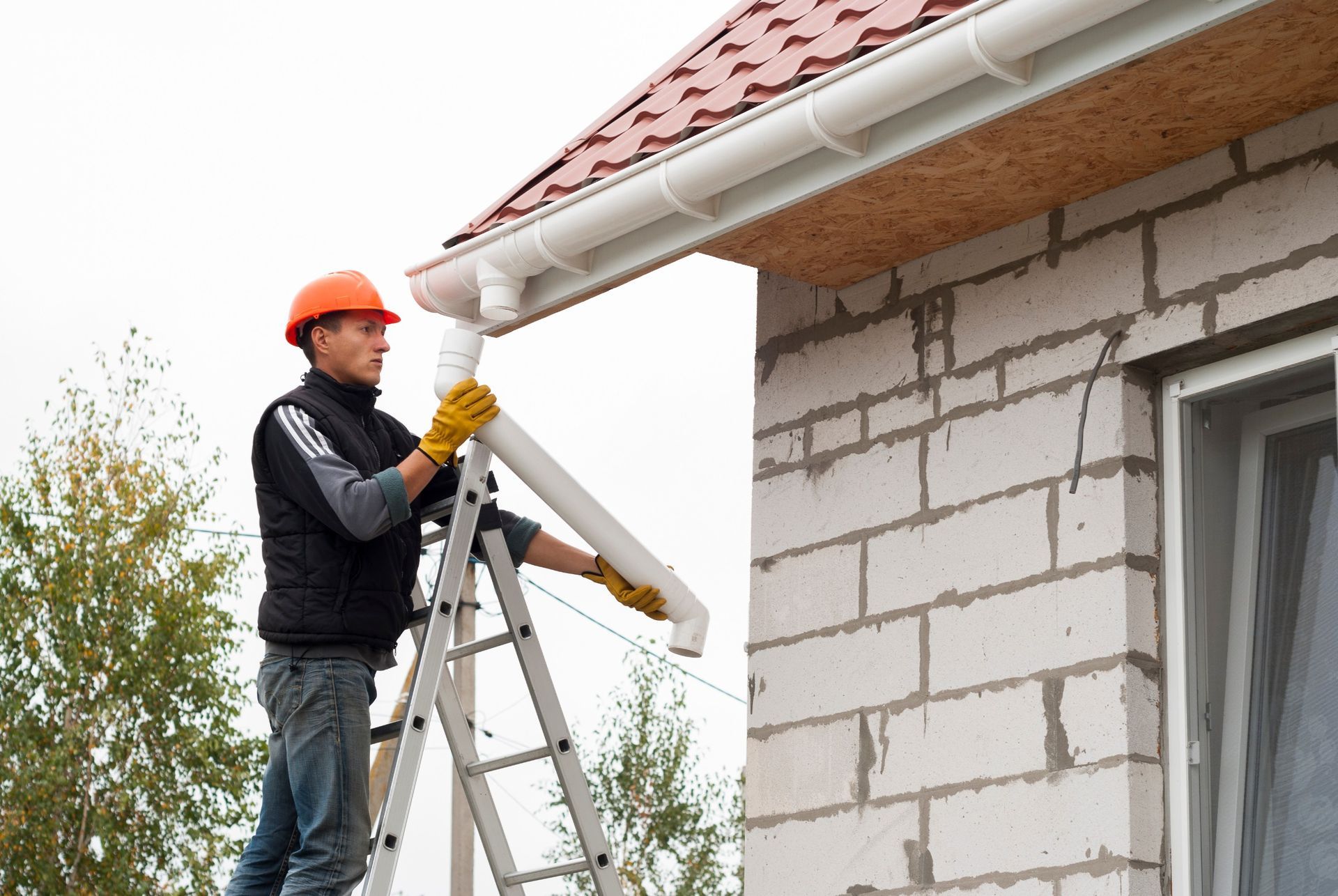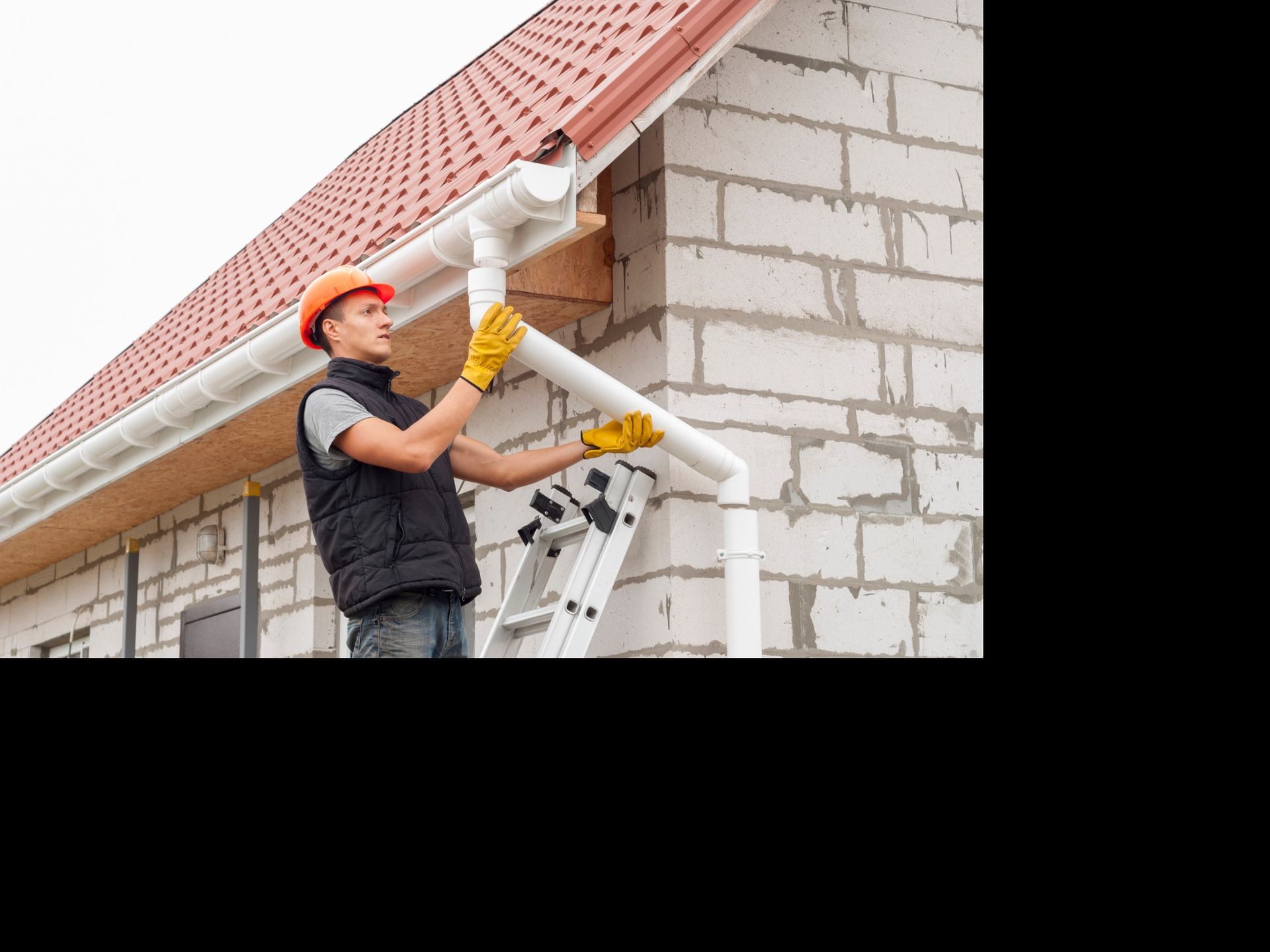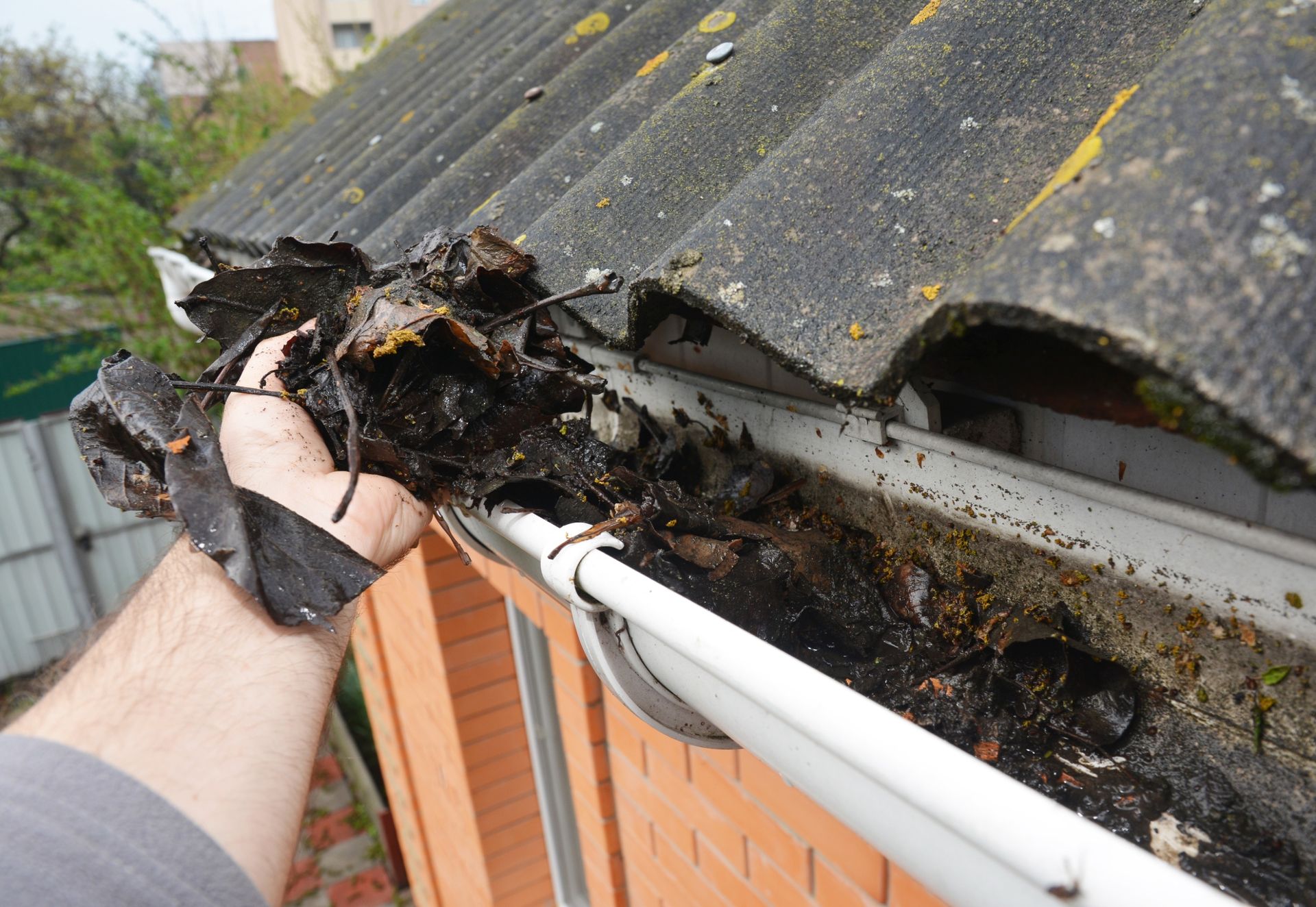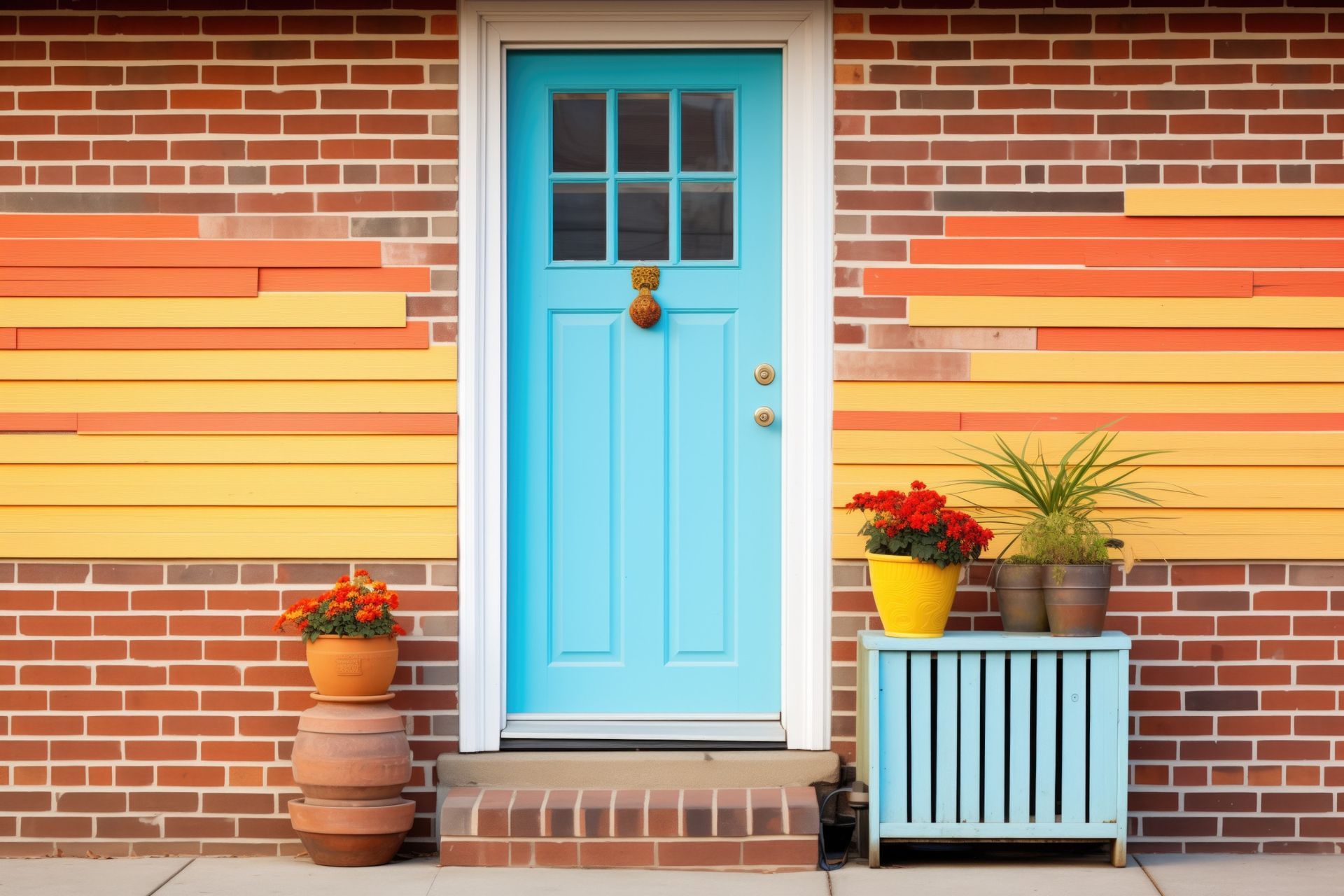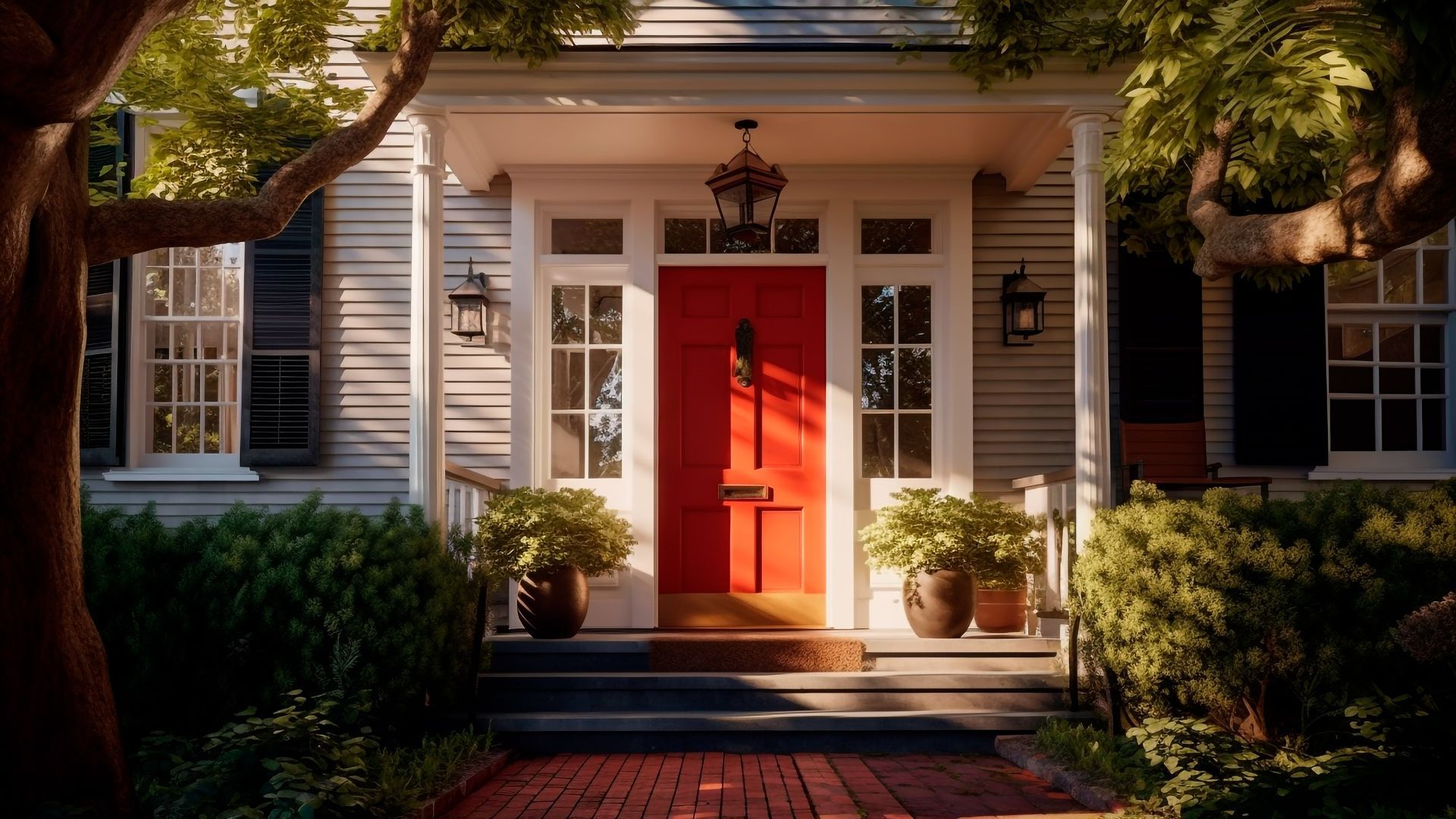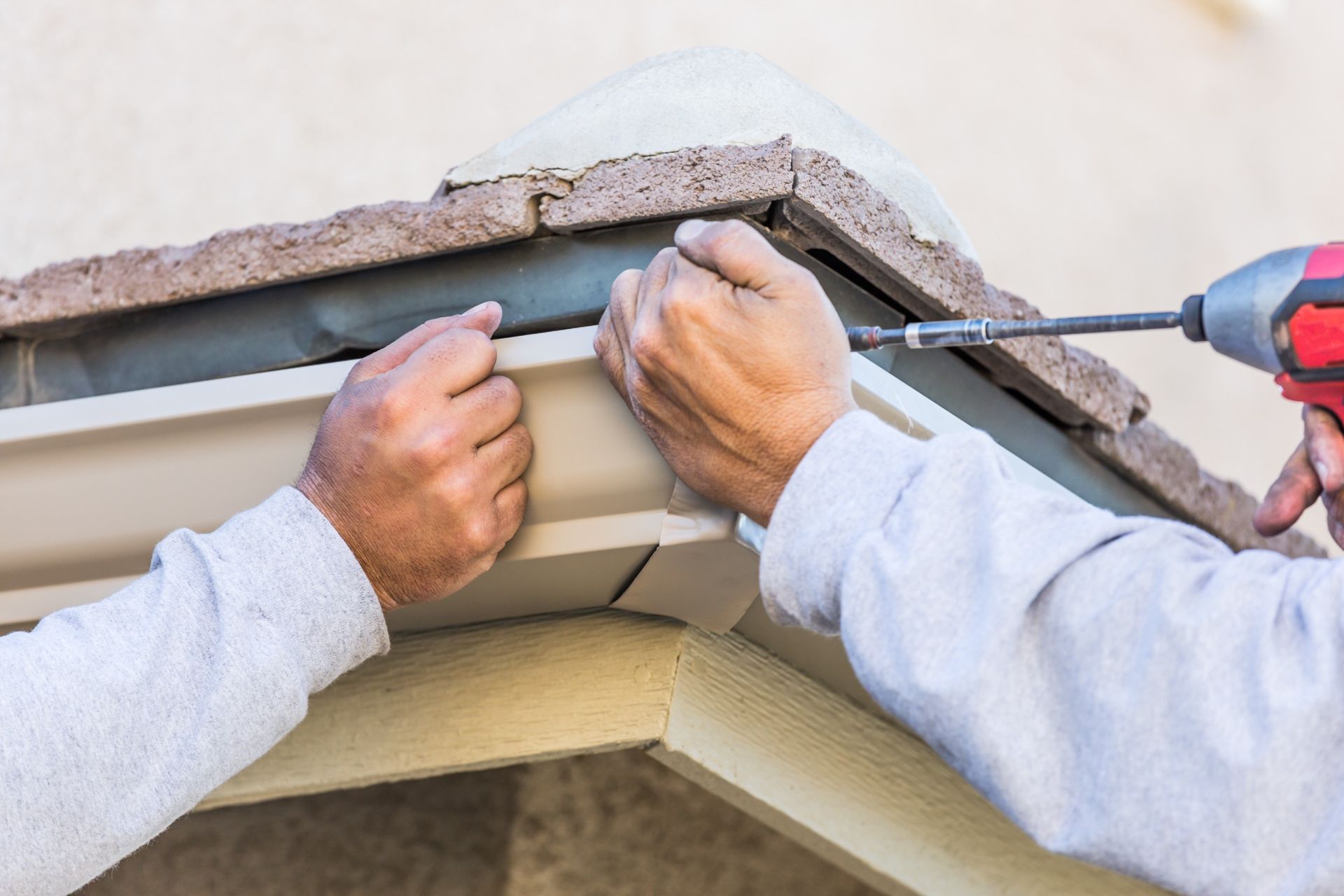
Get in touch
619 Tamiami Trl N, Nokomis, FL 34275, United States of America
Got Questions? Call Us Today (941) 492-6064
How to choose the right gutter size for your specific needs and climate
How to Choose the Right Gutter Size for Your Specific Needs and Climate
Choosing the right gutter size is crucial for effective water management for your home, and it depends on your specific needs and climate. Here's how to choose the right gutter size:
Evaluate your roof size and slope. The larger the roof size and steeper the slope, the more water will flow into the gutters. Therefore, a larger gutter size is necessary to accommodate the increased water flow.
Consider the amount of rainfall in your area. If you live in a heavy rainfall area, you'll need a larger gutter size to handle the additional water.
Determine the size of the downspouts. The size of the downspouts should match the size of the gutters to ensure proper water flow and prevent overflow.
Get professional help. Consult a reputable gutter installation company, like The Heights Aluminum, Inc., to assess your specific needs and recommend the right gutter size for your climate and home.
Choosing the right gutter size is essential for protecting your home from water damage and keeping your gutters functioning properly.
Pro Tip: Always opt for larger gutter sizes to accommodate additional water flow, especially if you live in areas with heavy rainfall.
Understanding Gutter Sizes
Choosing the right gutter size for your home is an important decision that can impact the efficiency and longevity of your gutter system.
The size of your gutters largely depends on the size and slope of your roof, as well as the climate of your region.
This blog will explore the factors you should consider when selecting the right gutter size.
K-Style vs Half-Round Gutters
K-Style and Half-Round are two of the most popular gutter styles you can choose for your home, each with its unique set of features and benefits.
K-Style: This style of gutters has a flat bottom and a decorative, ogee front shape that looks great on most modern homes. K-Style gutters come in larger sizes and can handle a higher volume of water runoff. They are especially effective in areas that receive heavy rainfall or have steep roofs.
Half-Round: This style of gutters has a rounded shape that gives them a classic, timeless look. Half-Round gutters are easy to clean and maintain, making them an excellent choice for smaller homes or properties with low to moderate water runoff. These gutters come in smaller sizes and are perfect for areas with mild weather conditions and minimal rainfall.
Pro tip: The right gutter size depends on the amount of rainfall your area receives, the slope of your roof, and the size of your home. Consult with a professional to help you choose the best gutter size and style for your specific needs.
Standard Gutter Sizes
Standard gutter sizes are essential to understand when choosing the right gutter for your specific needs and climate.
5-inch gutters are the most common and can handle light to moderate rainfall, making them suitable for most homes.
6-inch gutters are recommended for areas with heavy rainfall and larger roofs to prevent overflow and water damage.
Here are some factors to consider when choosing the right gutter size:
- The size of your roof - The larger the roof, the larger the gutter size needed to handle the water runoff.
- Climate - Heavy rainfall areas would need larger gutters to prevent overflow and water damage.
- The pitch of your roof - A steep roof would require a larger gutter size to handle the water flow.
Pro Tip: When in doubt, always choose a larger gutter size to ensure proper water drainage and prevent costly water damage to your home.
How to Measure Your Roof’s Square Footage
Measuring your roof's square footage is a crucial step in determining the material and costs required for roofing repairs, replacements or installations.
Here's how to do it:
First, determine the shape of your roof- whether it is rectangular, square, or another unique shape.
Next, measure the length and width of each section of your roof using a standard measuring tape.
Multiply the length and width to find the square footage of each section.
Once you have measured each section of the roof, add them together to find the total square footage of your roof.
To choose the right gutter size for your specific needs and climate, consider factors such as the size of your roof, average rainfall in your area, and local building codes.
Pro tip- It's always a good idea to consult with a roofing professional to ensure accuracy when measuring your roof's square footage and determining the appropriate gutter size for your home.
Consider Climate Factors
When it comes to choosing the right gutter size for your particular home, climate is an important factor to consider. Depending on the climate where your home is located, you might find that one gutter size is more appropriate than another.
In this blog, we will go over the elements of climate you should keep in mind when selecting the right gutter size for your home.
Heavy Rain and Snowfall
When it comes to choosing the right gutter size for your specific needs and climate, considering climate factors, such as heavy rain and snowfall, is crucial. The size of your gutters must be adequate to handle the amount of precipitation you typically receive, and large enough to prevent overflowing or backups that can damage your home.
Here are the factors to consider when selecting the right gutter size for your home:
- Rainfall intensity: A larger gutter system is preferable if you experience heavy rainfall.
- Roof size: A larger roof surface area requires a larger gutter system.
- Roof pitch: A steep pitch roof requires a larger gutter system to keep up with the faster runoff.
- Snowfall: If you live in a snowy climate, a larger gutter system is necessary to handle the increased runoff from melting snow.
Consulting with a professional gutter installer can help you determine the ideal gutter size and seamless gutter system options for your specific needs and climate. Pro tip: Investing in a gutter guard system can help prevent clogs and debris buildup, increasing the overall lifespan and efficiency of your gutters.
Wind Gusts and Storm Activity
When it comes to choosing the right gutter size for your specific needs and climate, it is important to consider factors like wind gusts and storm activity to ensure a properly functioning gutter system. High winds and heavy rainfall can overwhelm gutters that are not adequate for the climate.
Here are some tips to help you choose the right gutter size:
Consider the average annual rainfall in your area to determine the necessary gutter capacity.
Find out the maximum wind gusts expected in your location and choose gutters that can withstand those speeds.
Evaluate the size of your roof and the amount of water it sheds during a heavy downpour to calculate the necessary gutter capacity.
Consult with a professional contractor to help you choose the appropriate gutter size for your specific needs and climate.
Choosing the right gutter size based on climate factors can prolong the life of your gutter system, prevent water damage to your home, and save you money on costly repairs.
Temperature and Frost
When choosing the right gutter size for your specific needs and climate, one of the most important climate factors to consider is temperature and frost. In colder climates, gutters must be able to handle the weight of snow and ice buildup without sagging or breaking. Typically, wider gutters with larger downspouts are the best option in these areas.
In warmer climates, heat and humidity can cause expansion and contraction in metal gutters, leading to warping, cracking, and leaks. Thinner gutters may be suitable for these areas, although proper maintenance and regular inspections are still necessary.
The size and pitch of your roof should also be considered when choosing the right gutter size. A steep roof may require larger gutters to accommodate faster water flow.
It is essential to consult with a professional in gutter installation and maintenance to ensure that you get the right size and type of gutter for your specific needs and climate.
Building Design and Water Volume
Choosing the right gutter size for your specific needs and climate can make all the difference when it comes to protecting your building. With the right gutter design, you can capture and channel the maximum amount of water for the conditions and environment you live in.
Let's take a look at how to determine the best gutter size for your particular building design and water volume.
Roof Pitch and Gutter Slope
Roof pitch and gutter slope are two essential factors that determine the amount of water volume a gutter system can handle. To get the best result when selecting the right gutter size for your specific needs and climate, it is important to understand how these two factors work together.
Roof pitch refers to the angle or slope of your roof and affects the amount of water runoff that it generates. A roof with a steep pitch will produce more rainwater, requiring a larger gutter system to handle the volume of water. On the other hand, a flat roof, or a roof with a gentle slope, will have less water runoff, which means you may need a smaller gutter system.
Gutter slope refers to the angle or pitch of your gutter, which determines how efficiently it moves water away from your home's foundation. The right gutter slope ensures that water flows smoothly towards the downspouts and out of your home's drainage system.
Understanding roof pitch and gutter slope is crucial when choosing the right gutter size for your home's specific needs and climate. It is highly recommended that you consult with a professional contractor like The Heights Aluminum, Inc. to ensure that you select the ideal fit for your home's needs.
Roof Material
When choosing a roof material for your building design, it's essential to consider the water volume in your specific climate to determine the right gutter size.
Here are some factors to keep in mind:
Rain Frequency: The more often it rains, the larger the gutter you will need to accommodate the water volume.
Roof Pitch: A steep-sloped roof increases the velocity of rainfall, which means you'll need a larger gutter to handle the water.
Roof Size: The bigger your roof, the more water it will collect, so you'll need a larger gutter that can handle the volume.
Climate: In areas with heavy rains and frequent storms, it's crucial to have a larger gutter, whereas in moderate climates, a smaller one will suffice.
Consulting with a professional, like The Heights Aluminum, Inc. in Venice, Florida, can help you accurately determine the right gutter size for your specific needs and climate.
Home's Water Volume
The home's water volume plays an important role in determining the right gutter size for your specific needs and climate.
Here's how to choose the right gutter size:
Determine the average rainfall in your area. Areas with heavy rainfall will require larger gutter sizes.
Calculate the roof area that needs to be drained. The bigger the roof area, the larger the gutter size required.
Consider the pitch of your roof. Steeper roofs will require larger gutters to handle the water flow.
Choose the right material. Different gutter materials have different maximum capacities, which should be considered when determining the appropriate size.
Pro Tip: Properly sized gutters are key to preventing water damage and maintaining the integrity of your home's foundation. Consult a professional to ensure you choose the appropriate size and material for your specific needs and climate.
Choosing the Right Gutter Size
Choosing the correct gutter size for your home or business is essential for effective rainwater management. There are many factors to consider when selecting the appropriate gutter size such as the type of roof, climate, annual rainfall and the size of the roof.
With the right guidance and advice, you can choose the best gutter size for your specific needs and climate.
Standard vs Oversized Gutters
When choosing the right gutter size for your specific needs and climate, it's important to understand the difference between standard and oversized gutters.
Standard gutters are typically 5 inches wide and are suitable for most residential homes with mild to moderate rainfall. They are lightweight, cost-effective, and easy to install. Standard gutters are ideal for homes with a sloped roof, as they help drain rainwater away from the foundation of the house.
Oversized gutters, on the other hand, are usually 6 inches or wider and are recommended for homes located in areas with heavy rainfall or flat roofs. They can handle a larger volume of water and are less likely to overflow during heavy downpours. While oversized gutters are pricier than standard gutters, they are a good investment for homes in rainy climates, as they can prevent water damage to the roof and house exterior.
When choosing the right gutter size for your home, it's essential to take into account your specific needs, roof design, and climate.
Choosing the Right Gutter Thickness
Choosing the right gutter thickness is crucial to ensure that your gutters can withstand the climate and weather conditions of your area. The thickness of the gutter depends on multiple factors, such as the region's average annual rainfall, snowfall, and wind conditions.
Gutter thickness is measured in gauge, and the lower the number, the thicker the gutter. For areas with intense rainfall and wind conditions, experts recommend installing gutters with a minimum thickness of 26-gauge. For more severe climates, such as heavy snowfall or extreme winds, 24-gauge gutters are an excellent option.
It's important to keep in mind that thicker gutters come at a higher cost, but they are more durable and last longer. If you live in an area with less severe climates, the standard 27-gauge gutters are sufficient.
Choosing the right gutter thickness that matches your area's weather conditions and your budget is key to keeping your gutters functioning correctly and protecting your home from water damage.
Consulting with a Professional
Consulting with a professional is essential when it comes to choosing the right gutter size for your specific needs and climate. The Heights Aluminum, Inc., located in Venice, Florida, provides expert advice on gutter installation and maintenance.
Here are some factors and tips to consider when selecting the appropriate gutter size:
Rainfall intensity: The amount of rainfall in your area is crucial in determining the gutter size. If you typically experience heavy rainfalls, you'll need a larger gutter size to prevent overflowing water damage.
Roof size: The size and pitch of your roof also influence the gutter size. A larger roof requires a larger gutter size to accommodate the proper drainage of rainwater.
Materials: The type of materials used to construct your gutters can also impact the size selection. Consult with a professional to determine the best materials and gutter size for your unique situation.
With the help of a professional, you can ensure that you have the right gutter size for your specific needs and climate, protecting your home from water damage.
Maintaining your Gutters
Keeping your gutters in good order is essential to ensuring your home's appearance and condition. Not only do gutters help prevent water damage, but they can also help keep your home looking its best.
But how do you choose the right size gutter for your specific needs and climate? This blog by The Heights Aluminum, Inc. in Venice, Florida will cover all the aspects to consider when selecting the right gutter for your home.
Regular Cleaning and Inspection
Regular cleaning and inspection of your gutters is essential to maintain their functionality, durability, and longevity.
Cleaning:
Clogged gutters can lead to water damage, mold, and pest infestations. To clean your gutters, start by removing any large debris such as leaves or twigs by hand or using a scoop. When all the large debris has been removed, flush out the remaining dirt and small debris with a garden hose. Inspect the gutter for any damage, such as leaks or rusted spots. Make any necessary repairs as soon as possible.
Inspection:
Regular inspections can help to detect and address any issues before they become serious problems. Inspect the gutters for any signs of cracks, sagging or other damages. Check if the gutter is properly sloped, and there are no areas of standing water. Ensure the gutter hangers are secure and in good condition.
Pro tip: Regular cleaning and inspection of gutters can help to prevent costly repairs and extend the life of your gutter system. Plan a schedule to clean and inspect your gutters at least twice a year, preferably before the rainy season.
How to Identify and Fix Gutter Damage
Identifying and fixing gutter damage is crucial to keep your home safe and to maintain the integrity of your gutters. Here are a few steps to help you get started.
Identifying the Damage: Check your gutters for any signs of damage, such as cracks, holes, rust, or sagging. Pay attention to any standing water or overflowing water during rain. These are the most common signs of gutter damage.
Fixing Gutter Damage: Clean the damaged area and dry it before trying to fix it. Apply a layer of roofing cement on the area of the leak, and then press a piece of aluminum foil over it. Finish the repair by adding another layer of roofing cement over the foil.
Preventative Maintenance: To avoid damage to your gutters, clean them out regularly, and trim tree branches that overhang onto the roof.
Choosing the right gutter size for your specific needs and climate is important to prevent water damage to your home's foundation. Consult a professional to help you determine the ideal gutter size for your home.
Pro Tip: Regular maintenance can help prevent costly repairs and extend the life of your gutters.
When to replace or upgrade your gutters
Replacing or upgrading your gutters is necessary when they show signs of wear and tear, damage, or inadequate performance. Here's when you need to replace your gutters:
Sagging gutters: If your gutters are sagging or pulling away from the roofline, it's a sign that they're not properly secured or the hangers are failing.
Cracks and holes: If your gutters have cracks, holes, or rust spots, they're prone to leaks and water damage to your property.
Peeling paint or water stains: If you notice peeling paint or water stains on your exterior walls, it's a sign that your gutters are overflowing and not channeling water away from your home.
Incorrect size: If your gutters are too small for your roof size or rainfall amounts in your area, you might need to upgrade to a larger size or capacity. Consult with a professional to ensure that you choose the right size and style that suits your specific needs and climate.
Pro tip: Regular maintenance and cleaning of your gutters can extend their lifespan and prevent costly repairs or replacements.
